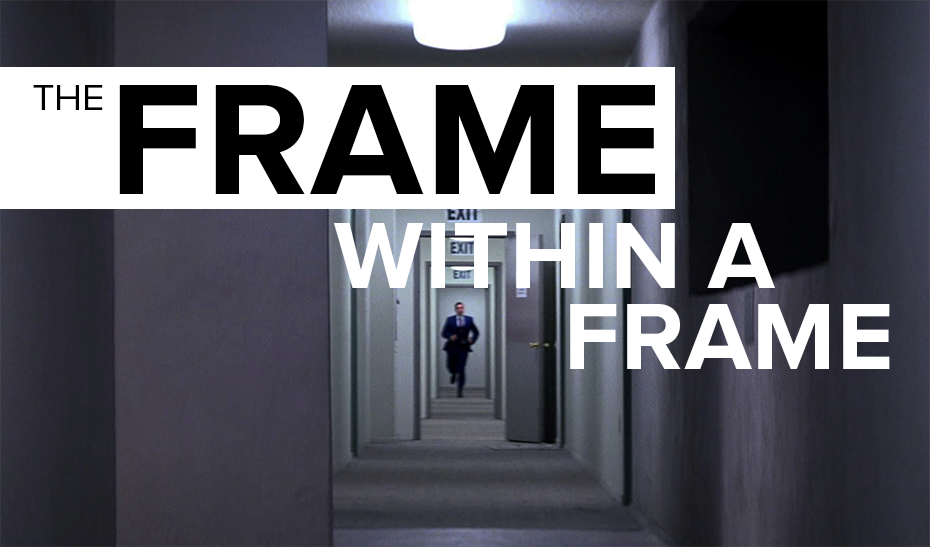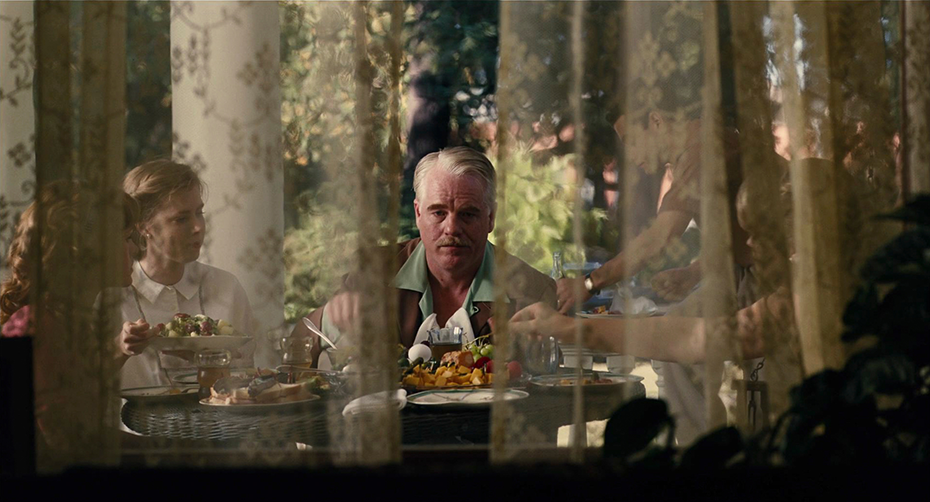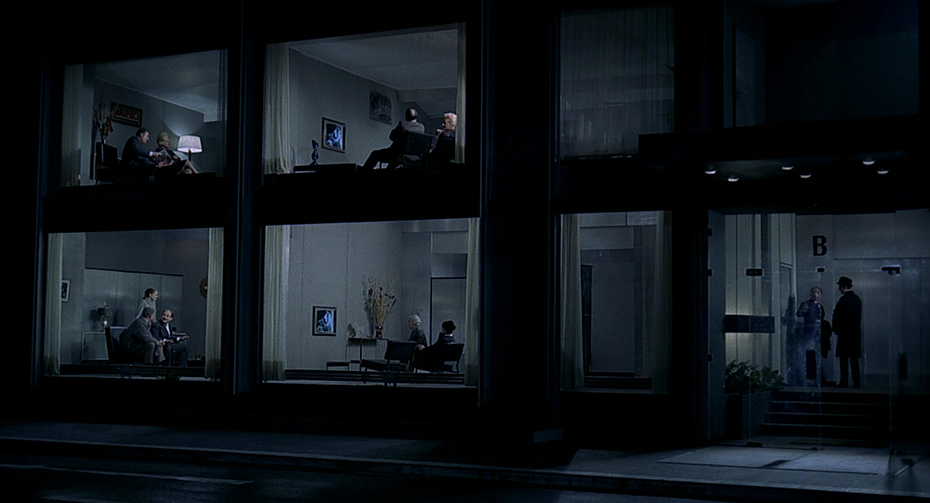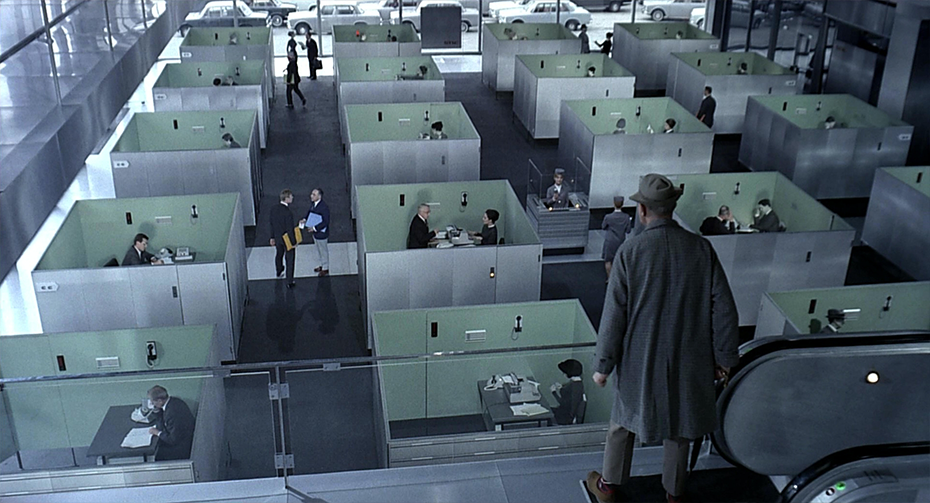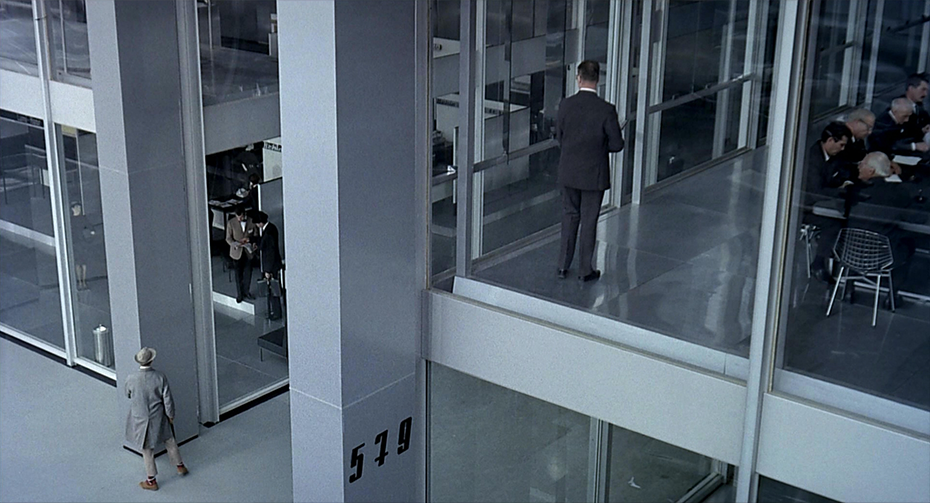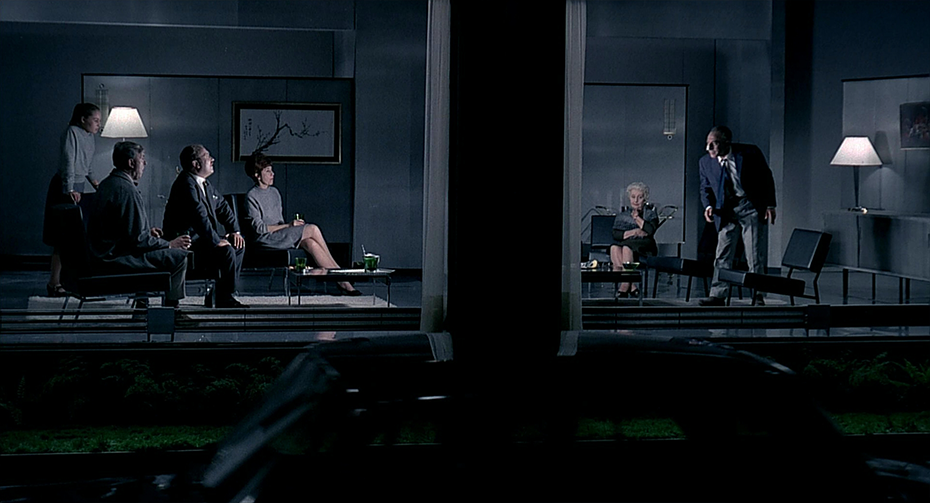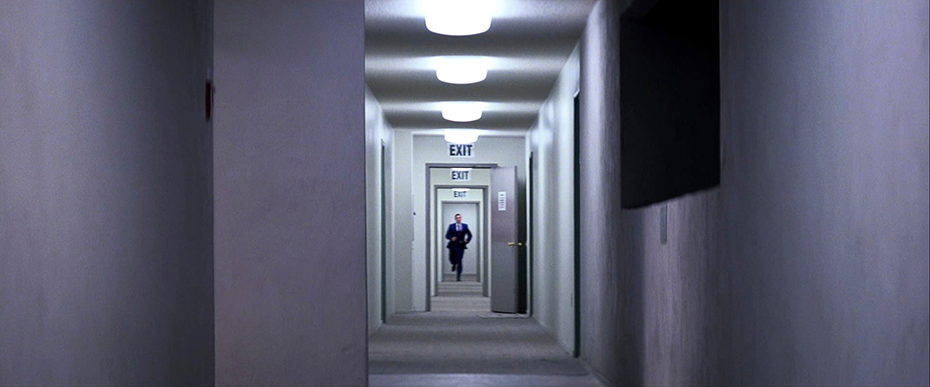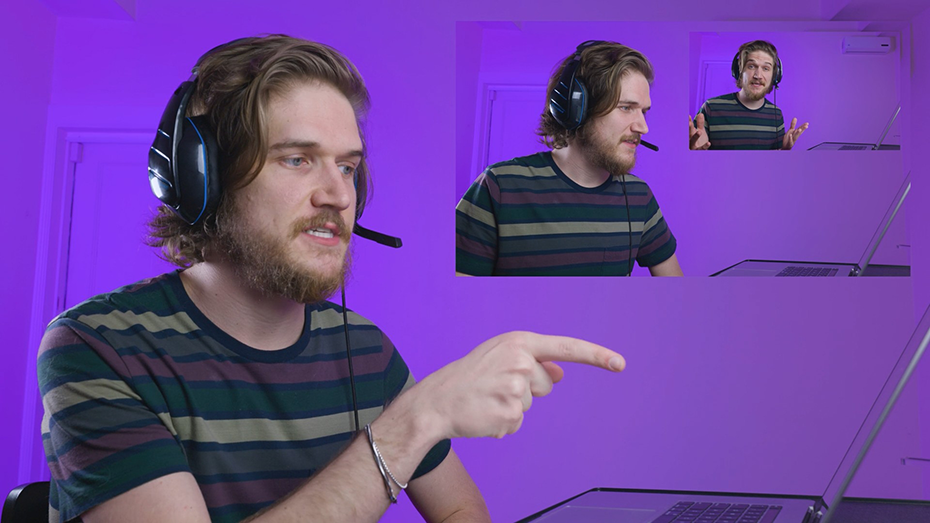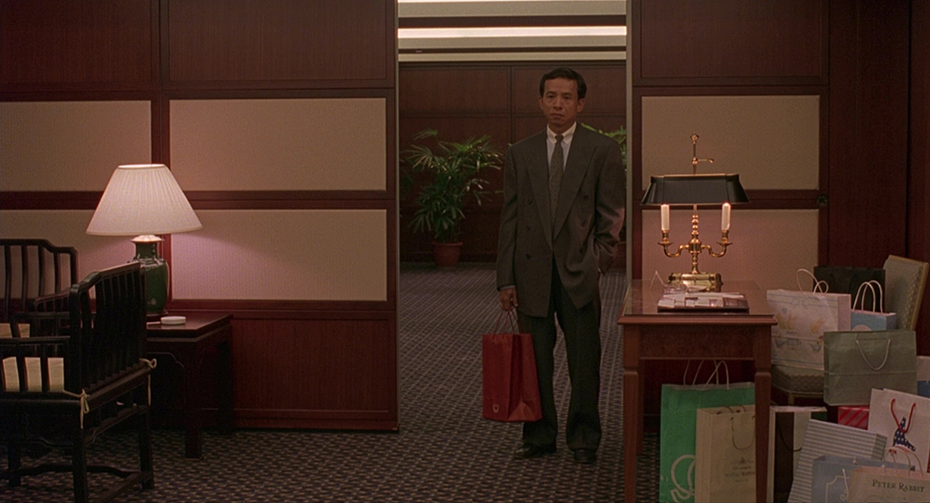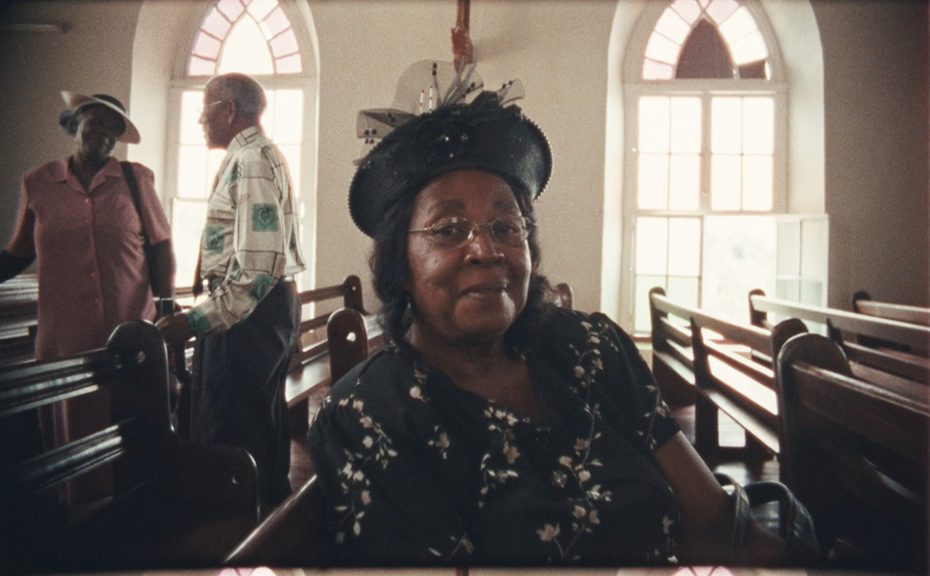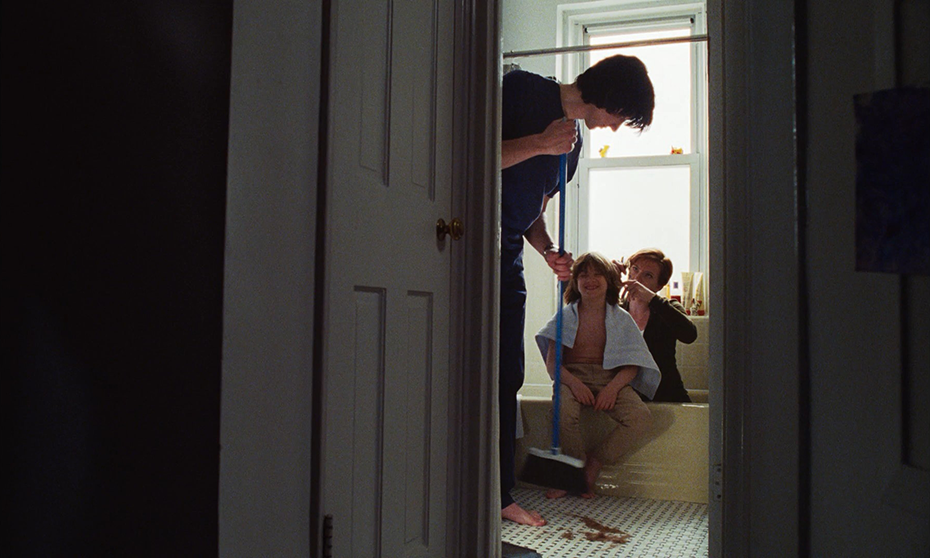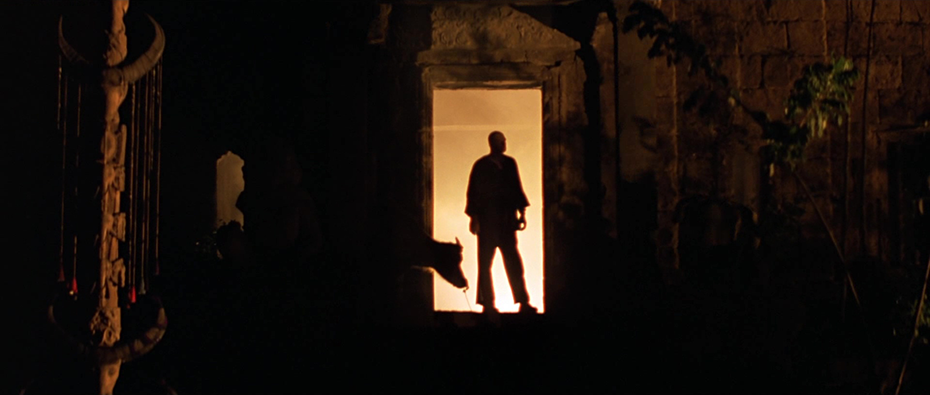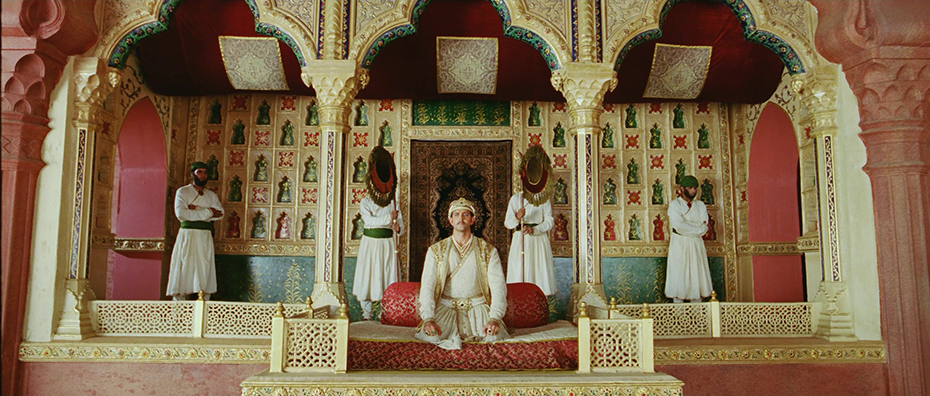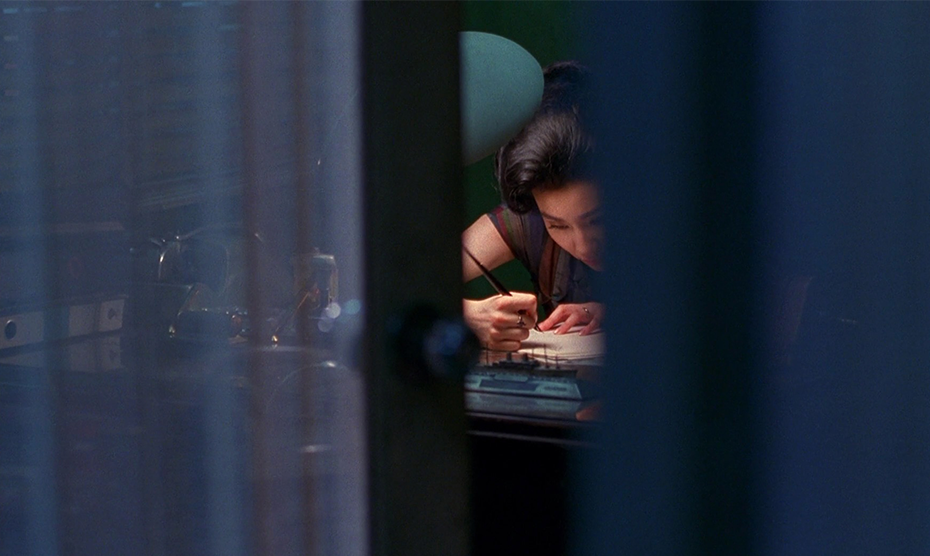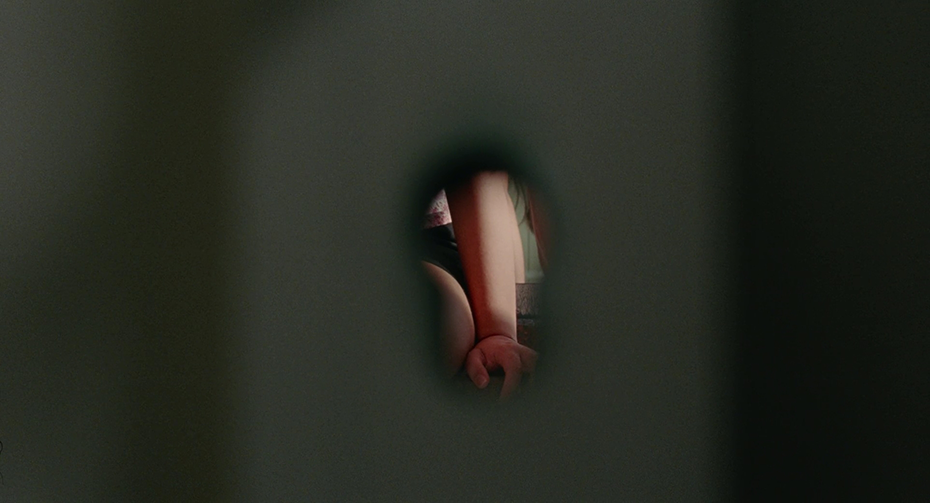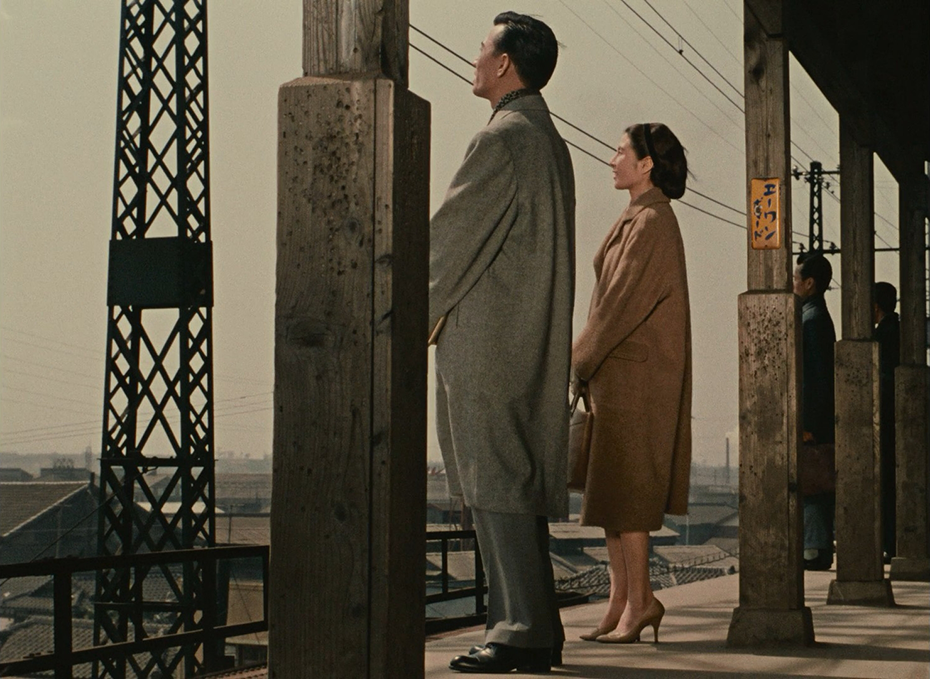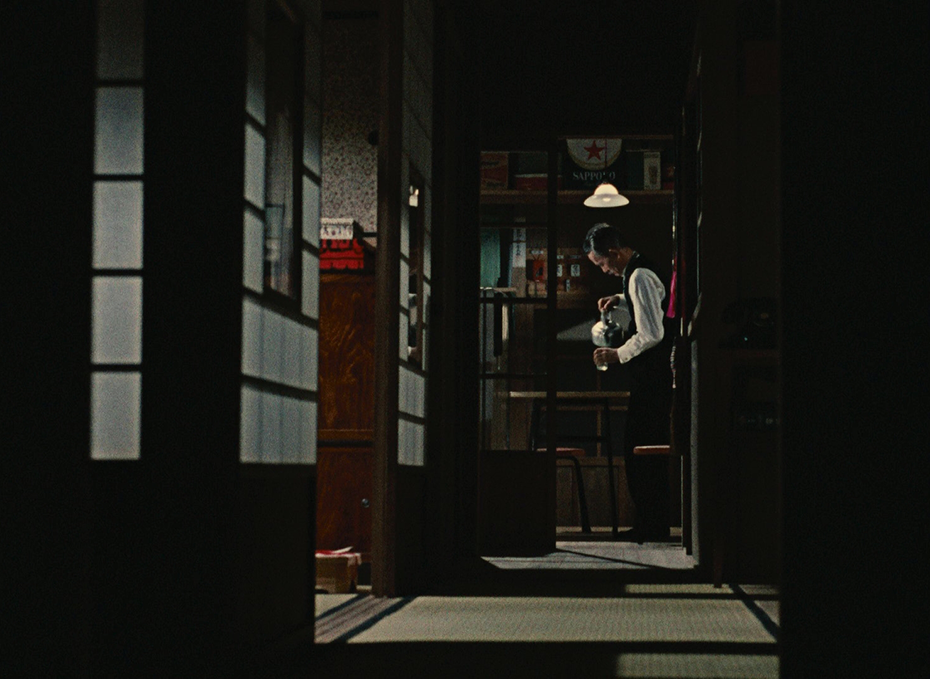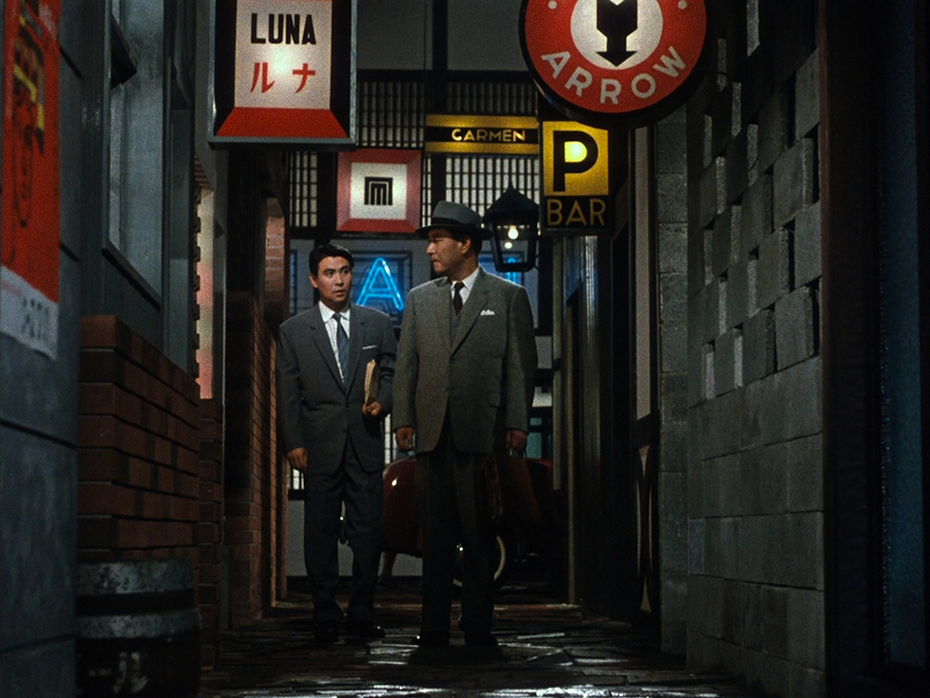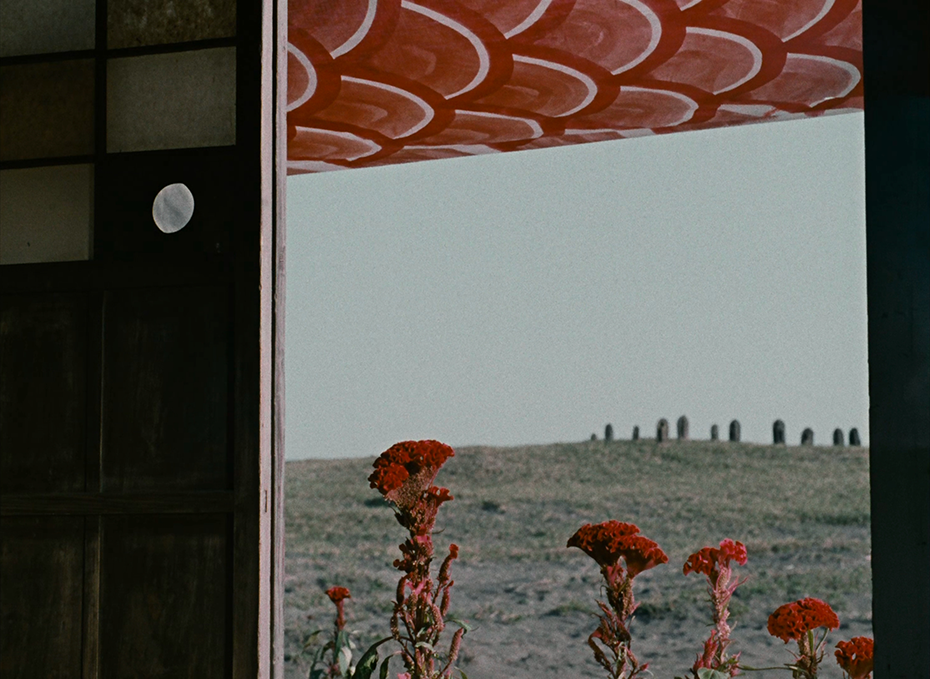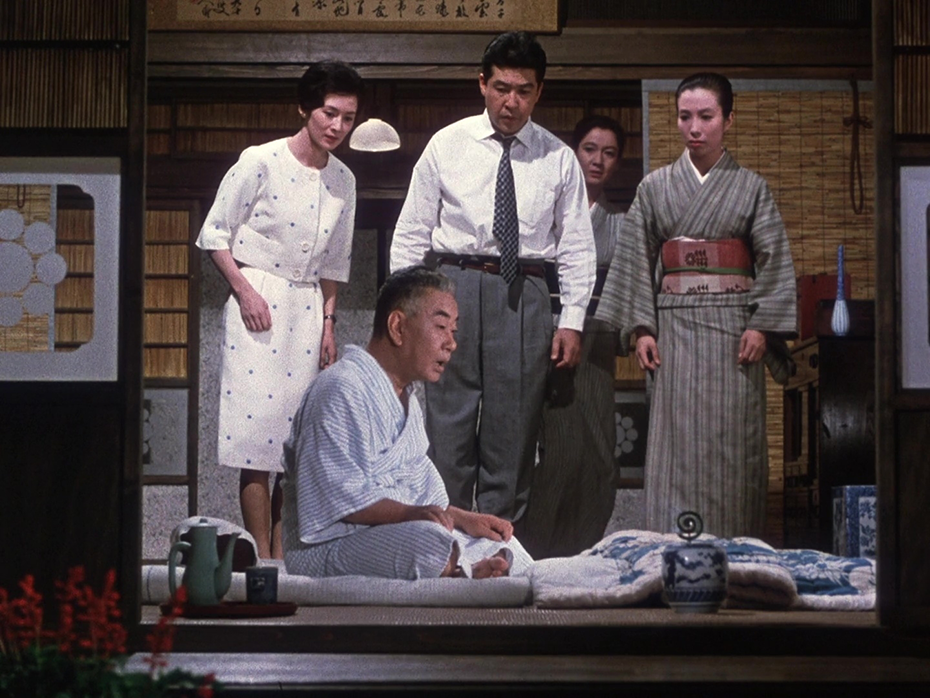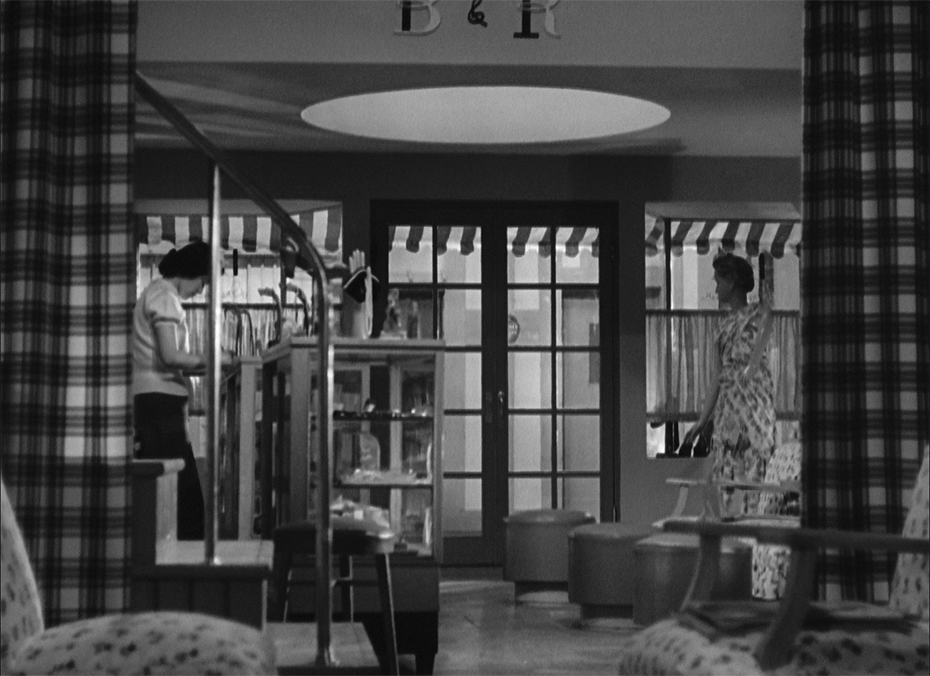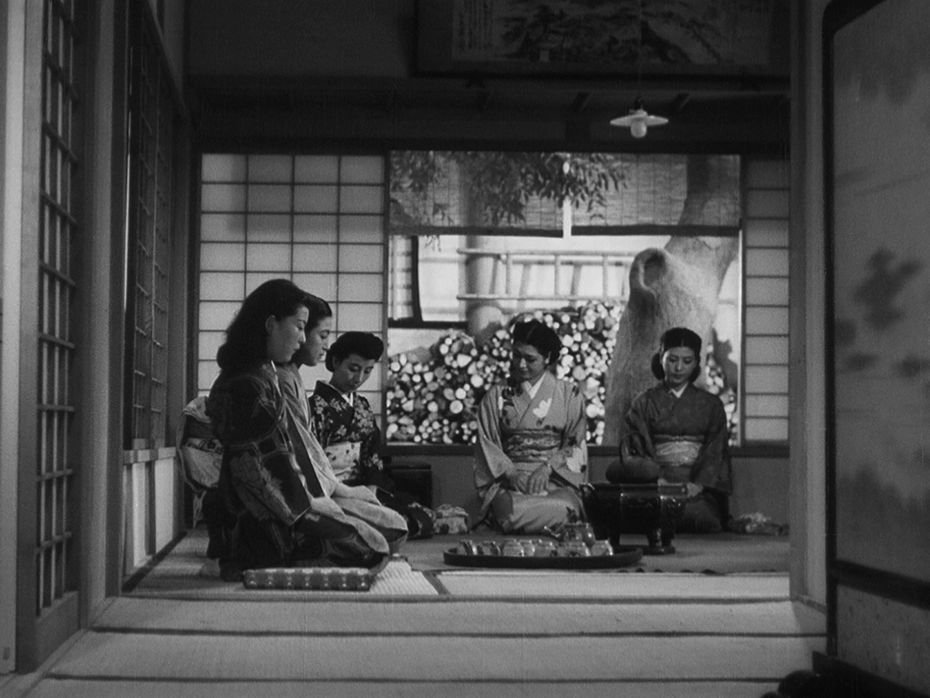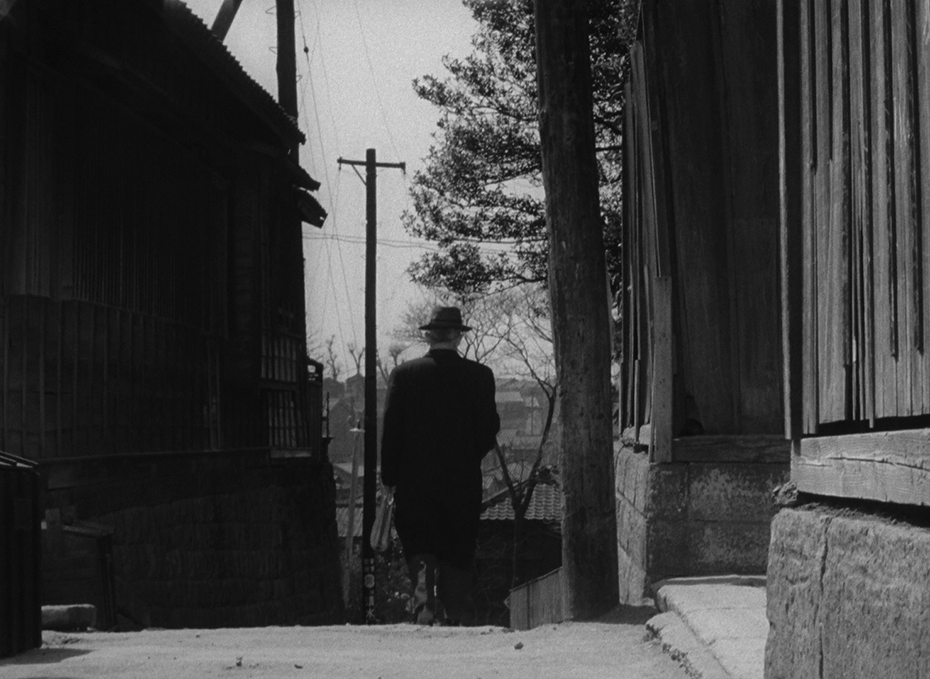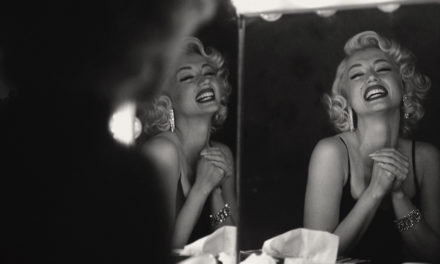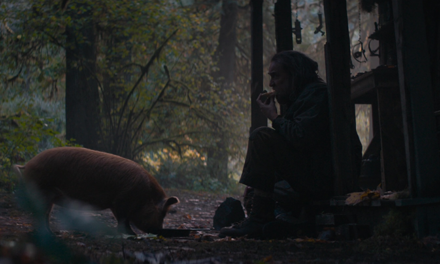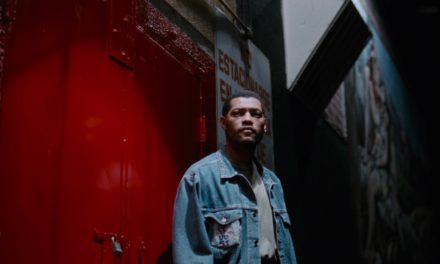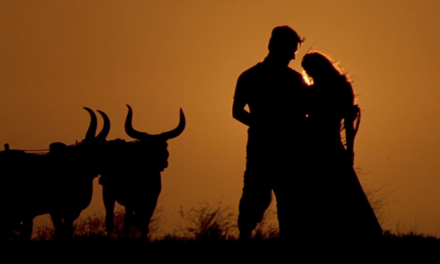05.30.23
THE FRAME WITHIN A FRAME
The frame within a frame shot is one of the most powerful compositional techniques in a filmmaker’s toolkit. Far more than just an aesthetic device, the frame within a frame shot can heighten the emotion of a moment, show us who a character is, or shift our perspective altogether. In this post we’re gonna look at just a few examples of effective frame within frame shots from a variety of genres and film traditions and try to illuminate some of their differing functions and effects.
TRAPPING A CHARACTER
REAR WINDOW (1954)
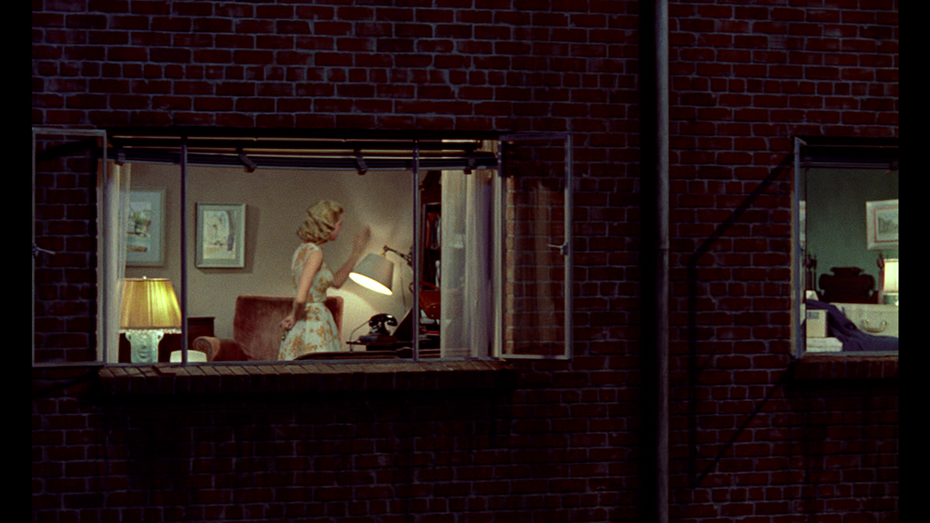
Alfred Hitchcock is widely considered the master of suspense and looking at his 1954 masterpiece, Rear Window, we can see some sterling examples of how he utilizes frame within a frame shots toward these ends. In this scene, Lisa (Grace Kelly) is shown in the apartment across the street from Jeff (James Stewart), trapped in the frame within the frame as she snoops around the apartment. Hitchcock and cinematographer Robert Burks use this shot to trap Lisa and position her visually as small and vulnerable. This pays off moments later when Jeff sees the murder suspect Thorward (Raymond Burr) heading back inside, unbeknownst to Lisa, who has nowhere to run.
THE GRADUATE (1967)
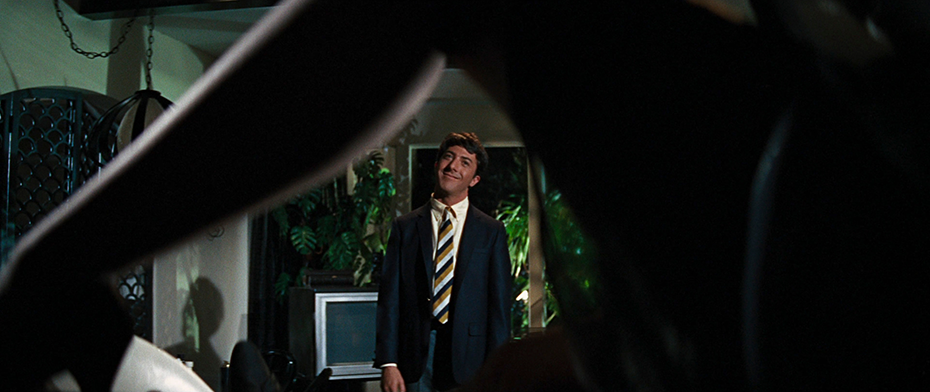
Trapping a character in a frame within a frame doesn’t just have to be used for a thriller. In this iconic shot from The Graduate, Mrs. Robinson’s (Anne Bancroft) leg is used as the compositional device trapping Benjamin Braddock (Dustin Hoffman) in the frame within the frame. Framing Benjamin this way shows us that he has nowhere to run in this scene, but the way that Mike Nichols and DP Robert Surtees choose to compose this shot also tells us how Mrs. Robinson has trapped Ben – with her sexuality. A claustrophobic composition ultimately played for comedy rather than for suspenseful tension.
THE RED BALLOON (1956)
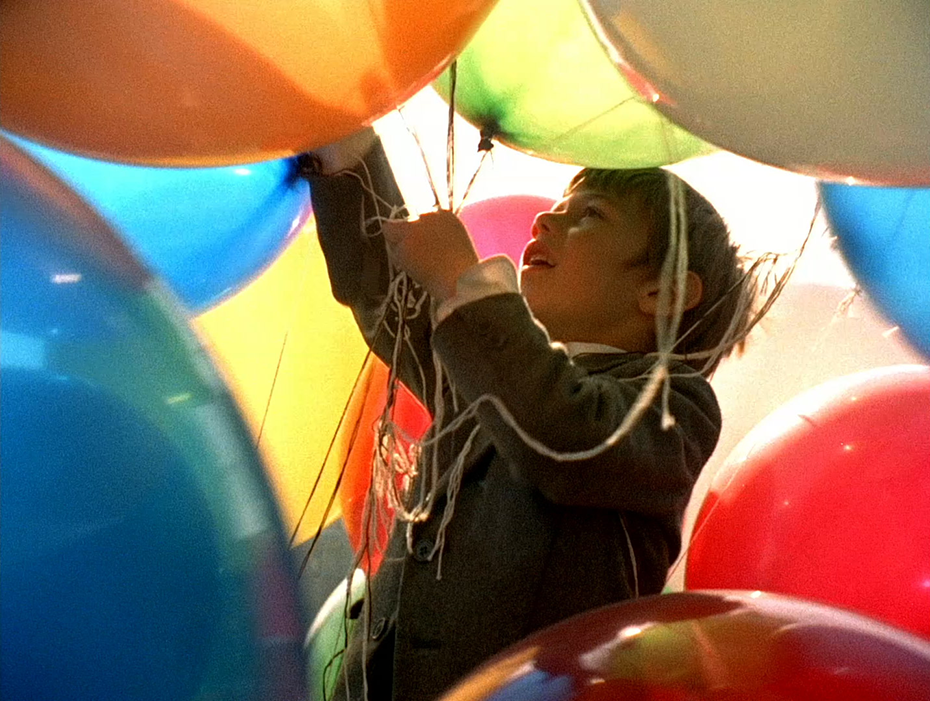
Albert Lamorisse’s 1956 short film The Red Balloon shows how confining a subject in a tight frame within a frame can be used to evoke a sense of euphoria and wonder as much as anxiety or suspense. In the climax of the film, Pascal (Pascal Lamorisse) is surrounded on all sides by dozens of living balloons that he has befriended. The color and lighting design of the shot instantly bring us inside Pascal’s joyful emotional state.
ISOLATION
LA PICADA (2022)
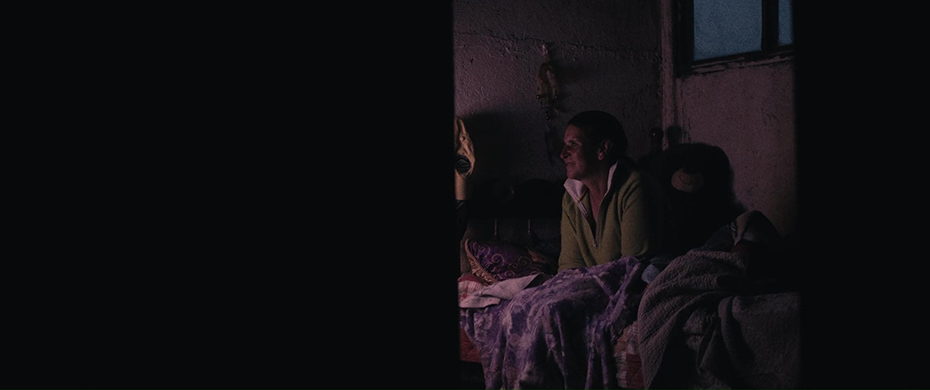
Felipe Zúñiga’s 2022 documentary La Picada follows Rosmeri, the last inhabitant of a ghost town destroyed by the constant eruptions of a volcano in Costa Rica. Frame within a frame shots are very prevalent in this film and are used to reinforce our subject’s distance from the rest of the world. Zúñiga and cinematographer Nicolás Wong keep the audience at a distance from Rosmeri, isolating her in the frame within a frame, but also isolating the viewer from her.
THE MASTER (2012)
Isolation doesn’t just have to be created by having a character alone in a frame. In this shot from Paul Thomas Anderson’s 2012 film The Master, Anderson and DP Mihai Malaimare Jr. use sheer curtain drapes as a compositional device, building a frame within a frame that isolates Lancaster (Philip Seymour Hoffman) despite all the people around him. We understand that this is a person who feels emotionally isolated from the world, even though he is constantly surrounded by his entourage of acolytes.
COMEDY
PLAYTIME (1967)
Jacques Tati’s masterpiece of urban absurdity, PlayTime, is chock full of frames within frames that in part highlight the isolation of modern life, but also serve as the compositional structure for extended comedic setpieces. Whether it’s floor to ceiling apartment windows, fishbowl offices, or rows of cubicles viewed from a great height, Tati uses these frame within a frame wide shots as a way to execute spatial physical comedy in long takes without cutting. The viewer’s eye darts across the image as a character exits one space and enters another, or the actions in one space have hilarious effects on the characters in another. People begin to feel like cogs in a huge machine or ants in a glass ant farm, with the viewer as god, watching their movements from a delighted comic distance.
PUNCH-DRUNK LOVE (2002)
Another Paul Thomas Anderson film – Punch-Drunk Love – uses frame within a frame shots to create a very different emotional effect, playing right on the border between comedy and anxious tension. In this scene, Barry (Adam Sandler) realizes he’s blown an opportunity to kiss Lena (Emily Watson) and comes running back into her building with no idea where her apartment is. The repeated frames within frames of the apartment hallway trap Barry in a bewildering maze of gray, while the viewer watches (similar to Tati’s camera) from a static distance.
BO BURNHAM: INSIDE (2021)
Comedic repetition applies just as much to the visual presentation of a joke as it does to the delivery of a joke itself. In Bo Burnham: Inside, Burnham uses the frame within a frame technique to build a sense of meta-textual insanity as he repeatedly comments on his own videos, building on top of each other as frames within frames within frames.
NARRATIVE CONTEXT
YI YI (2000)
In Yi Yi, Edward Yang and cinematographer Yang Wei-Han compose a frame within a frame to show NJ (Wu Nien-Jen) watching on as his family’s fights in front of him. The cut between the brawl and NJ adds comedy to the scene, but it also helps place NJ within an important narrative context at this point in the film. NJ is at a distance physically and emotionally from the rest of his family, and he is here at this restaurant from a long day, holding a gift bag to add to the pile that feels insignificant next to the conflict that has emerged in front of him.
BLACK MOTHER (2018)
In Khalik Allah’s 2018 documentary Black Mother, frame within a frame shots serve a vital narrative purpose, giving context to a largely dialogue-free film that uses portraiture to introduce us to new characters. By framing this woman between the church windows, we understand immediately how important this environment is to her, and that she is very much at home here. Allah shows us the power this woman possesses by framing her so dominantly in this shot, and implies that her power is derived from the environment in which she moves.
NOSTALGIA
MARRIAGE STORY (2019)
Any time a frame within a frame shot is used, it naturally puts the audience at a distance from the subject. This is a powerful tool through which a filmmaker can evoke nostalgia, as we see in this shot from Noah Baumbach’s 2019 film Marriage Story. The shot is part of a montage that we understand via voiceover is set in the past, but the frame within a frame shot takes that one step further. By placing us at a distance from these characters, and keeping their space illuminated with the rest of the frame dark, Baumbach and DP Robbie Ryan indicate to us that this scene of family bliss is nothing more than a memory. A snapshot in a photo album.
POWER
APOCALYPSE NOW (1979)
Isolation doesn’t always mean loneliness. It can also convey a sense of status. In Francis Ford Coppola’s epic Apocalypse Now, Coppola and cinematographer Vittorio Storaro frame Colonel Kurtz (Marlon Brando) within a frame, silhouetted by fire and looking through a window that we can tell from the tree is high above the ground. We need no additional context to understand that this man has an almost god-like status among the people around him, and that he has achieved that through fear and violence.
JODHAA AKBAR (2008)
In the 2008 film Jodhaa Akbar, director Ashutosh Gowariker and DP Kiran Deohans also use the frame within a frame technique to convey power as Akbar (Hrithik Roshan) is framed by gold-plated columns and arches, as well as by servants who fan him. Akbar is framed in a low-angle symmetrical shot using a wide lens, conferring his status to the audience without the need for any dialogue. Yet in this case the lighting and production design compliment the composition to communicate an altogether different character to his power and status than the image of Colonel Kurtz.
POINT OF VIEW
IN THE MOOD FOR LOVE (2000)
The frame within a frame shot is one of the most effective ways to place an audience in the point of view of a character observing someone or something else. In Wong Kar-wai’s In the Mood for Love, romantic tension is built over and over again through POV shots, in particular frame within a frame shots like this one, where we feel the social and emotional barriers between Chow Mo-wan (Tony Leung) and Su Li-zhen (Maggie Cheung), despite their (and the audience’s) desire for them to be together.
AFTERSUN (2022)
The keyhole shot is a classic example of both frame within a frame and point of view composition. As this shot from Charlotte Wells’ Aftersun shows us, the more restrictive the frame within the frame is, the more the audience is forced into the subjectivity of the character, putting together the whole image piece by piece in our minds.
YASUJIRŌ OZU’S FRAMES WITHIN FRAMES
It is impossible to talk about frame within a frame shots without studying the work of Japanese director Yasujirō Ozu, who placed the technique at the bedrock of his cinematic style. While Ozu certainly did not invent the frame within a frame shot, his use of this technique brought it into focus in a way that few other directors had previously done. Today, it could be argued that Ozu is the most referenced and influential filmmaker for those studying the application of this compositional technique.
Geometric organization is crucial to all of Ozu’s compositions and even his actors are part of that geometric organization. The camera hardly ever moves in his films, making frame within a frame shots even more noticeable. The technique allows Ozu to focus the viewer’s eye within a frame, drawing attention to the character as well as their relationship to the space around them. The results can be funny, sad, suspenseful, isolating and dramatic, drawing the audience’s attention purely to the action occurring within the frame.
Ozu used this technique deliberately and with conviction, and the results are moving and powerful. Here are a few examples from: An Autumn Afternoon, The End of Summer, Late Autumn, Floating Weeds, Good Morning, Equinox Flower, Tokyo Twilight, Tokyo Story, The Flavor of Green Tea Over Rice, Late Spring, A Story of Floating Weeds, and Dragnet Girl – all of which can be found on ShotDeck.
Studying Ozu’s films alone could give anyone a masterclass in how to effectively use the frame within a frame shot. The Cinema Cartography’s video essay on Ozu – “Yasujirō Ozu – The Depth of Simplicity” is a great resource to understand Ozu’s style across his body of work. Check it out above.
The frame within a frame shot is not just a way to add visual interest or make a static shot look pretty, but rather a powerful filmmaking tool that can convey every emotion from euphoria, to misery, to triumph. Frames within frames can inform the perspective of the camera, sell a visual gag, or heighten the emotional impact of a moment all through simple purely cinematic means. We hope this selection of frame within a frame shots inspires you to search for more examples, and to think about ways you can take your shot list to the next level. You can find thousands of frame within a frame shots by searching ShotDeck right now!

